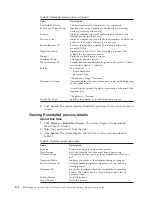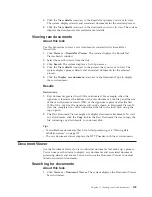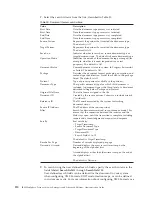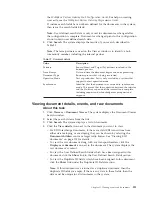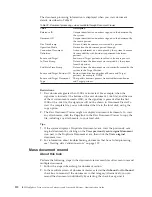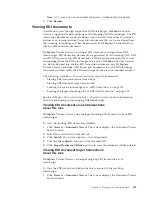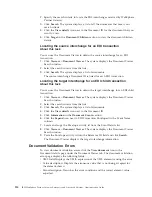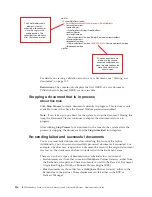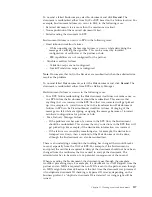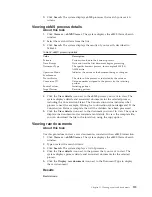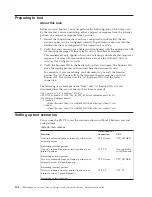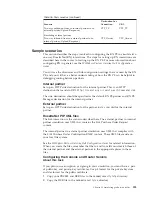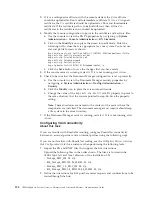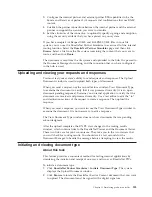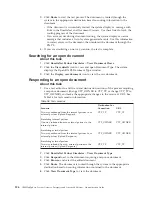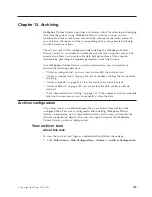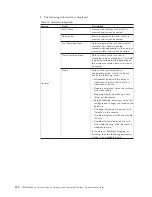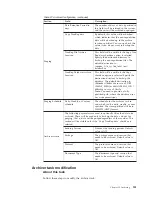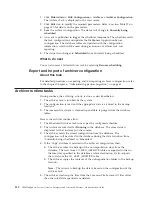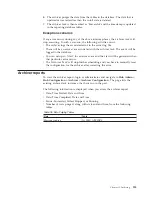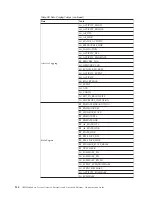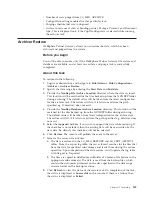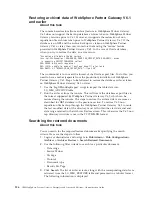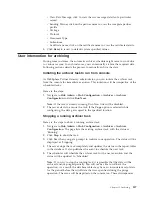
Preparing to test
About this task
Before you start the test, you must perform the following tasks, which may vary
by the role that you are simulating, either a request or response from the internal
partner, or a request or response from a partner:
1.
Review the connections that you have configured to confirm that the test
scenario appears to be configured correctly. In particular, make sure that the
destinations that are configured in the connection are active.
2.
Verify that your receivers are enabled and configured with the appropriate URL
for incoming messages. Different traffic occurs on different receivers.
This requirement only applies when you are testing a document that requires a
response. For more information about receivers, see the
WebSphere Partner
Gateway Hub Configuration Guide
.
3.
Verify the Business IDs in the header of your test document. The Business IDs
drive the routing process and control where the document is sent.
For example, if you are sending your document to yourself, the internal
partner, the “to” Business ID in the document header must be your own
Business ID. The system uses the “to” Business ID to find the correct
connection.
The following is an example of the “from” and “to” Business IDs in a test
document (lines that are not relevant have been removed):
<?xml version="1.0" encoding="UTF-8"?>
<!DOCTYPE Preamble SYSTEM "3A4_MS_V02_02_PurchaseOrderRequest.dtd">
<Pip3A4PurchaseOrderRequest>
<fromRole>
<GlobalBusinessIdentifier>987654321</GlobalBusinessIdentifier>
<toRole>
<GlobalBusinessIdentifier>567890123</GlobalBusinessIdentifier>
Setting up test scenarios
You can use the RN PS to test the scenarios shown in Table 35 between you and
your partners.
Table 35. Test scenarios
Scenario
Destination for
Connection
URL
One-way outbound from an internal partner to an
external partner.
Simulating internal partner.
VTP_Owner
VTP_OWNER
One-way inbound from an external partner to an
internal partner.
Simulating external partner.
VTP_TP
Not applicable
in this scenario.
Two-way outbound from an internal partner to an
external partner (Upload Request).
Simulating internal partner.
VTP_Owner
VTP_OWNER
Two-way inbound from an external partner to an
internal partner (Upload Request).
Simulating external partner.
VTP_TP
VTP_TP
122
IBM WebSphere Partner Gateway Enterprise and Advanced Editions: Administration Guide
Содержание E02HRLL-G - WebSphere Partner Gateway...
Страница 20: ...14 IBM WebSphere Partner Gateway Enterprise and Advanced Editions Administration Guide...
Страница 66: ...60 IBM WebSphere Partner Gateway Enterprise and Advanced Editions Administration Guide...
Страница 80: ...74 IBM WebSphere Partner Gateway Enterprise and Advanced Editions Administration Guide...
Страница 86: ...80 IBM WebSphere Partner Gateway Enterprise and Advanced Editions Administration Guide...
Страница 90: ...84 IBM WebSphere Partner Gateway Enterprise and Advanced Editions Administration Guide...
Страница 134: ...128 IBM WebSphere Partner Gateway Enterprise and Advanced Editions Administration Guide...
Страница 154: ...148 IBM WebSphere Partner Gateway Enterprise and Advanced Editions Administration Guide...
Страница 194: ...188 IBM WebSphere Partner Gateway Enterprise and Advanced Editions Administration Guide...
Страница 228: ...222 IBM WebSphere Partner Gateway Enterprise and Advanced Editions Administration Guide...
Страница 258: ...252 IBM WebSphere Partner Gateway Enterprise and Advanced Editions Administration Guide...
Страница 267: ......
Страница 268: ...Printed in USA...

